Tim du Toit is the editor and founder of Eurosharelab. He has more than 20 year of institutional and personal investing experience in emerging and developed markets. Tim is based in Hamburg, Germany. More of his articles can be found at Eurosharelab (www.eurosharelab.com).
Republished here with permission.
~~~
This article is the combination of two research reports I found where James recommended the best investment books he has come across.
Be sure to read right to the end of the document to see the “hidden gems” James recommended.
In order to give his choices a little structure James created four categories of books and only allowed him to select five books in each group. He admits that there were many great books that just didn’t quite make his very restricted list.
(click in the book picture or the bold text to go to the Amazon page)
Classics
The first category is the timeless masters. The books in this group have lasted for generations, yet their wisdom seems often to go unheeded.
Security Analysis by Ben Graham and David Dodd
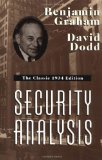 James prefers the original 1934 edition of this book (available thanks to a recent reprint). No other book covers such an immense array of investment knowledge. Whilst the accounting standards may have altered, the very essence of investing can be found within these pages.
James prefers the original 1934 edition of this book (available thanks to a recent reprint). No other book covers such an immense array of investment knowledge. Whilst the accounting standards may have altered, the very essence of investing can be found within these pages.
Some may prefer the easier (and more comfortable to hold) read that is provided by Graham’s Intelligent Investor. Either or indeed both of these great books should be required reading for anyone serious about investing.
Chapter 12 of the General Theory of Employment, Interest and Money by John Maynard Keynes
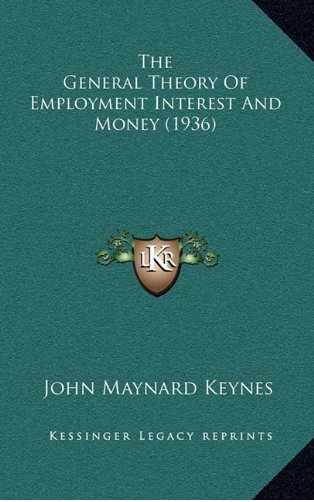 Much of the General Theory will do little to help investors as it is concerned with economics. Keynes himself turned his back on trying to apply economics as an aid to investing as he put it “I can only say that I was the principal inventor of credit cycle investment… and I have not seen a single case of success having been made of it”.
Much of the General Theory will do little to help investors as it is concerned with economics. Keynes himself turned his back on trying to apply economics as an aid to investing as he put it “I can only say that I was the principal inventor of credit cycle investment… and I have not seen a single case of success having been made of it”.
However, Chapter 12 is very different from the rest of the book; it contains a wealth of understanding and analysis of the psychology and institutional constraints that bedevil investors as much today as they did when Keynes was writing in 1935.
You can print it out for free at Project Gutenberg Australia
The Theory of Investment Value by John Burr Williams
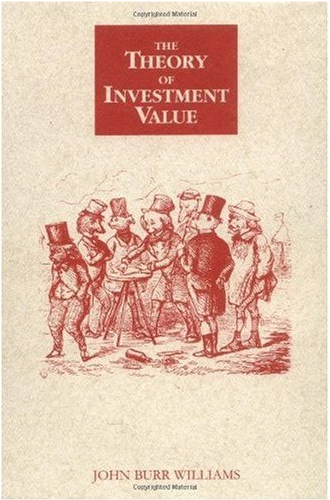 A third book from the 1930s (anyone spot a pattern emerging here?). John Burr Williams published his book in 1938 – having written it as his PhD thesis. Williams went to Harvard to study for his doctorate. His supervisor was none other than Joseph Schumpeter, who suggested that he looked at the question of intrinsic value of a stock. Williams actually published his book (backed in part by his own money) before he was awarded his PhD (a subject of much discussion at his viva).
A third book from the 1930s (anyone spot a pattern emerging here?). John Burr Williams published his book in 1938 – having written it as his PhD thesis. Williams went to Harvard to study for his doctorate. His supervisor was none other than Joseph Schumpeter, who suggested that he looked at the question of intrinsic value of a stock. Williams actually published his book (backed in part by his own money) before he was awarded his PhD (a subject of much discussion at his viva).
The book contains the essence of the discounted cash flow approach to valuation. As such it far predates the more widely cited Gordon papers (as in Gordon Growth Model). The book not only lays out the process and examples of DCF but also contains perhaps the first treatment of the industry lifecycle (Chapter VII). Williams opens The Theory of Investment Value with words that have been value investors’ creed ever since “Separate and distinct things not to be confused, as every thoughtful investor knows, are real worth and market price.”
Manias, Panics and Crashes by Charles Kindelberger
 First published in 1978 this is almost a candidate for our modern section. But it’s numerous reprints and editions since 1978 suggest that it has earned a place amongst the classics.
First published in 1978 this is almost a candidate for our modern section. But it’s numerous reprints and editions since 1978 suggest that it has earned a place amongst the classics.
This book contains not only a history of most of the major bubbles in financial markets, but also provides a framework for understanding their progress and ultimately their demise. As such it serves to remind us that although bubbles usually arise on different assets, the pattern they follow is relatively consistent.
We have often used the Minsky/Kindelberger paradigm when discussing the path of bubble unwinding
Reminiscences of a Stock Operator by Edwin Lefèvre
 Originally published in book form in 1923 (although published in Saturday Evening Post as articles prior to that), Reminiscences tells the barely fictionalised biography /autobiography of Jesse Livermore. Livermore battled with depression throughout his life; he finally lost the fight in 1932 when he took his own life.
Originally published in book form in 1923 (although published in Saturday Evening Post as articles prior to that), Reminiscences tells the barely fictionalised biography /autobiography of Jesse Livermore. Livermore battled with depression throughout his life; he finally lost the fight in 1932 when he took his own life.
Although a perennial favourite with traders, Reminiscences contains much advice that investors would do well to remember, such as “Another lesson I learned early is that there is nothing new in Wall Street. There can’t be because speculation is as old as the hills. Whatever happens in the stock market today has happened before and will happen again.
I’ve never forgotten that.” Or “There is the plain fool, who does the wrong thing at all times everywhere, but there is the Wall Street fool, who thinks he must trade all the time. No man can always have adequate reasons for buying or selling stocks daily – or sufficient knowledge to make his play an intelligent play. I proved it.”
And “The desire for constant action irrespective of underlying conditions is responsible for many losses in Wall Street even among the professionals, who feel that they must take home some money every day, as though they were working for regular wages.”
But perhaps my favourite quotation is “A stock operator has to fight a lot of expensive enemies within himself.”
Modern
To qualify to be in this section the book must have been written within the last ten years, but have the potential to become a classic given time.
The little book that beats the market by Joel Greenblatt
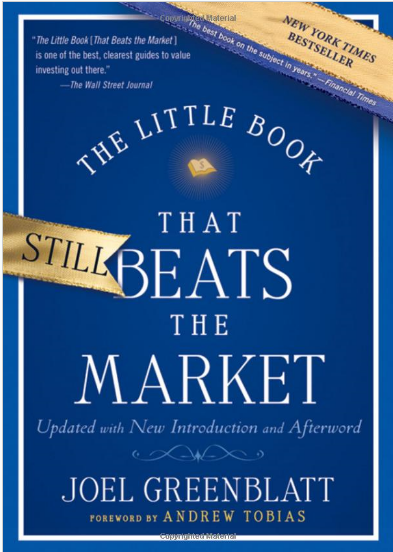 Regular readers will know that James is a big fan of Joel Greenblatt’s book. Indeed he has tested Greenblatt’s formula in non-US markets and shown it is a powerful tool regardless of the market under consideration.
Regular readers will know that James is a big fan of Joel Greenblatt’s book. Indeed he has tested Greenblatt’s formula in non-US markets and shown it is a powerful tool regardless of the market under consideration.
In just 155 pages Greenblatt produces a mass of evidence showing that following a quantitative value orientated approach to stock selection can produce exceptional performance. But the book is more than just a quantitative take on the value process; it also contains gems such as “You must understand only two basic concepts. First, buying good companies at bargain prices makes sense… Second, it can take Mr. Market several years to recognize a bargain.”
Even better than that, the book is written so that an 11-year-old can understand it. But a lot of professional investors could do far worse than peruse this slim volume.
The little book of value investing by Chris Browne
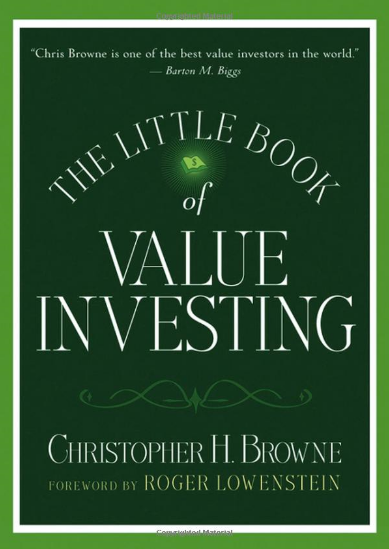 James’s second choice in the modern section is another book from the little book series. This one written by Chris Browne of Tweedy Browne – one of the greatest living embodiments of value investing.
James’s second choice in the modern section is another book from the little book series. This one written by Chris Browne of Tweedy Browne – one of the greatest living embodiments of value investing.
The very essence of the value approach and all it entails (patience etc.) are explored here in 180 pages.
The discussion on the margin of safety highlights the way in which value investors think about risk – a far cry from modern portfolio theory’s beta concept. Browne also explores issues such as how to distinguish a value trap from a value opportunity. Can be read easily in an afternoon, but should be repeatedly studied by value investors as a check on their own behaviour.
Fooled by Randomness by Nassim Taleb
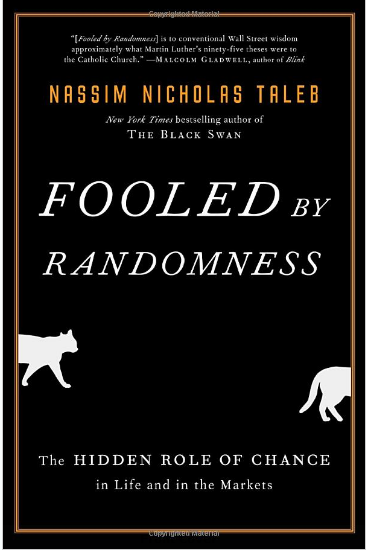 In this book Taleb highlights just how easy it is for us to fall victim to spotting patterns in the purely random.
In this book Taleb highlights just how easy it is for us to fall victim to spotting patterns in the purely random.
Every investor who has done well in a given period should read this book as a reality check, before they start to believe their own hype.
Anyone who is vaguely interested in the role of luck, chance and randomness will find Taleb’s book a source of much wisdom.
Contrarian Investment Strategies by David Dreman
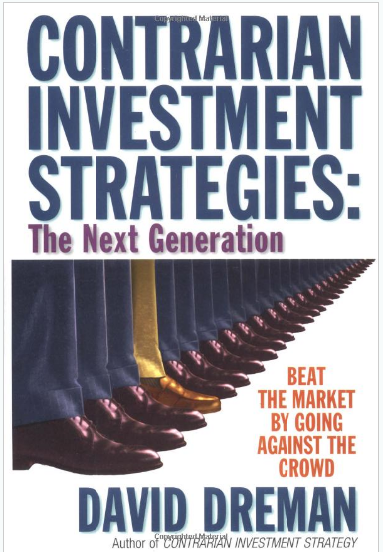 One of James’ favourite books on investment. He only recently read Dreman’s book (since then he have obtained and read his previous two books.
One of James’ favourite books on investment. He only recently read Dreman’s book (since then he have obtained and read his previous two books.
This tome is packed with deep insights into the nature of the investment problem, and practical investment strategies designed to avoid some of the behavioural pitfalls that we all too often stumble into.
Dreman is also an empirical sceptic, and offers up good statistical evidence to support his analysis – something that is far too rare in the world of investment books.
Speculative Contagion by Frank Martin
Fo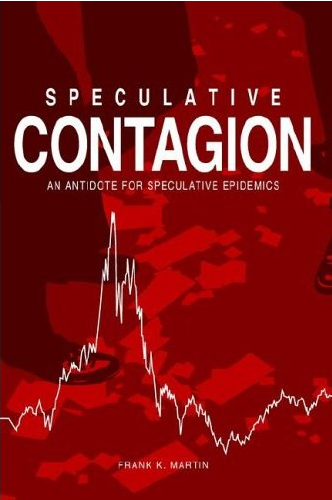 r James’ final selection in the modern category I wanted a book that represented an investor’s real time experience of dealing with the market. Several books could have fitted the bill; Cunningham’s edited version of Buffet’s letter was a front runner, as was Chancellor’s edited version of Marathon Asset Managements’ views (Capital Account).
r James’ final selection in the modern category I wanted a book that represented an investor’s real time experience of dealing with the market. Several books could have fitted the bill; Cunningham’s edited version of Buffet’s letter was a front runner, as was Chancellor’s edited version of Marathon Asset Managements’ views (Capital Account).
However, in the end I settled on Frank Martin’s Speculative Contagion. This book pulls together the annual reports that Martin had written to his clients throughout the bubble and burst years.
It is source of much investment insight. As regular readers will know James recently used Martin’s trinity of risks as a basis of a better way of thinking about the nature of risk from an investment perspective.
Martin’s book provides us with opportunity to see exactly how bad it feels to be on the wrong side of a bubble, but also delivers insights into the discipline needed to stick to sensible investment process though thick and thin.
Psychological
James mentions that the books in this category are close to his heart. They are books on psychology. They aren’t concerned with investing per se. Instead they are all concerned with the way in which we think and make choices.
Investing is all about making decisions and choices, and as such I think a good grip on psychology is vital for all investor’s hoping to conquer their internal demons.
The Robots Rebellion by Keith Stanovich
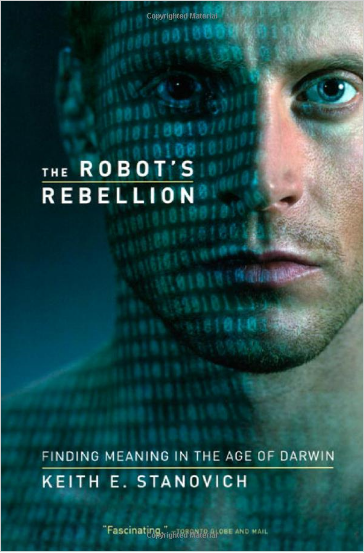 The title sounds like a Sci-Fi novel. However, the robots are us. Dawkin’s selfish gene ideas suggest we are effectively just a vehicle for the replication of genes. Stanovich argues that we may be the only species that have the ability to rebel against our genes.
The title sounds like a Sci-Fi novel. However, the robots are us. Dawkin’s selfish gene ideas suggest we are effectively just a vehicle for the replication of genes. Stanovich argues that we may be the only species that have the ability to rebel against our genes.
At the heart of his approach is a dual system theory of thought (system X vs. system C for regular readers). The X system is very much a product of genetics, the C system provides us with a way of over-riding our genetic predispositions.
Stanovich explores how evolutionary psychology and the heuristics and biases literatures can be reconciled (an arena that James has tried to explore before). The book also covers how and where many of the major biases are likely to show up.
Strangers to Ourselves by Tim Wilson
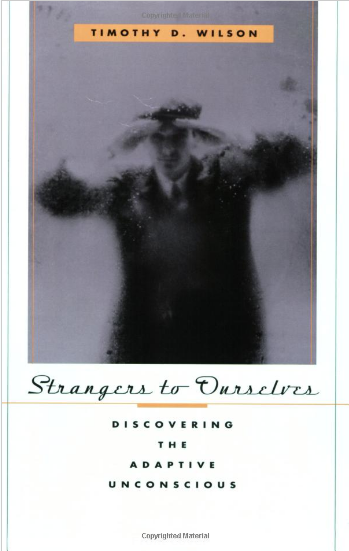 Freud introduced the concept of the unconscious (at least as it is known in the West). Sadly people seem to equate Freud with psychology. However, academic psychology has little to do with Freudian concepts thankfully.
Freud introduced the concept of the unconscious (at least as it is known in the West). Sadly people seem to equate Freud with psychology. However, academic psychology has little to do with Freudian concepts thankfully.
Tim Wilson’s book explores the modern concept of the unconscious (system X in many ways). He presents evidence showing that our actions are often outside of our conscious control. He also points out that simple introspection is not the answer, as we are more than capable of lying to ourselves. A brilliant, if disconcerting book.
How we know what isn’t so by Thomas Gilovich
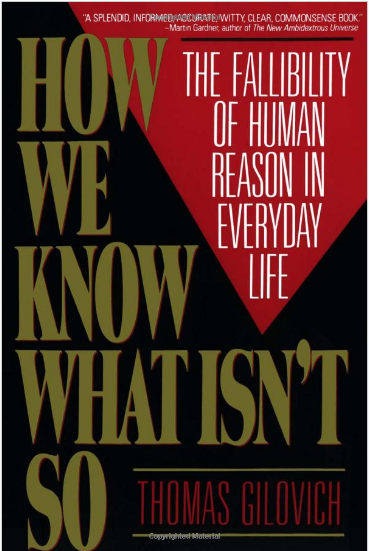 This book is one of the best introductions to error prone human reasoning that I have ever come across. Many of the biases that I have explored in the context of finance are to be found within the pages of this book.
This book is one of the best introductions to error prone human reasoning that I have ever come across. Many of the biases that I have explored in the context of finance are to be found within the pages of this book.
Gilovich covers such areas as our misperception of random events (hot-hands in basketball), our habit of seeking out information that agrees with us (confirmatory bias), and issues surrounding group influence on decisions.
Anyone interested in the pitfalls of human reasoning will find this a treasure trove of analysis.
Stumbling on Happiness by Daniel Gilbert
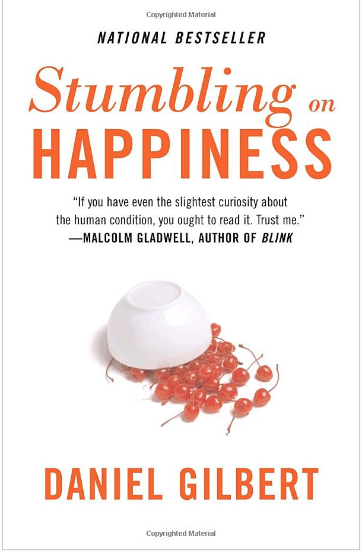 This book is really a book about the folly of forecasting. However, rather than focusing on the failure of GDP forecasts or interest rate forecasts, Gilbert is more interested in our forecasts about what makes us happy.
This book is really a book about the folly of forecasting. However, rather than focusing on the failure of GDP forecasts or interest rate forecasts, Gilbert is more interested in our forecasts about what makes us happy.
Gilbert is the leading expert in the field of affective (or emotional) forecasting. This book explores his research into why it is we don’t make decisions that would make us happy. Gilbert argues that someone else’s evaluation of how they feel in a given situation is a far better guide to how we will feel than our own prediction.
Not only is Gilbert’s subject fascinating, he is also an incredibly talented and funny writer, not to mention an astute observer of human behaviour with a wicked sense of humour.
The Psychology of Intelligence Analysis by Richard Heuer, Jnr
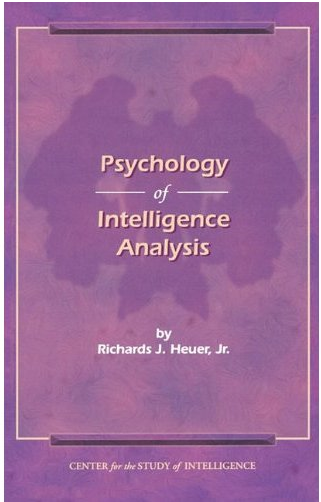 It isn’t often that the CIA is a good source of insight! However, this book pulls together Richard Heuer’s papers from 1978-1986 originally written for use within the CIA.
It isn’t often that the CIA is a good source of insight! However, this book pulls together Richard Heuer’s papers from 1978-1986 originally written for use within the CIA.
He neatly reviews the psychology literature as it relates to the processing of information, and its application to solving intelligence problems.
The overlap between intelligence analysis and investment analysis is surprisingly high. Both deal with decision making in the face of marked uncertainty. Heuer’s book is an easy read that more than repays its reading.
The chapter on the analysis of competing hypotheses should be mandatory reading for all financial analysts! This book may be the best value book on this list.
Hidden Gems
In this section James selected a hodgepodge of ideas and interesting reads, some are rare, some haven’t even been published yet, but all provide some powerful insights into the investment problem.
The Halo Effect by Phil Rosenzweig
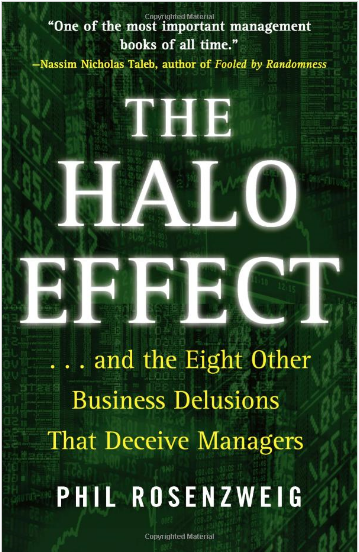 This book is an empirical sceptic’s delight and should be required for all of those involved in the analysis of companies from the bottom-up. Rosenzweig takes much of what passes for analysis in the business world and shows it to be complete piffle.
This book is an empirical sceptic’s delight and should be required for all of those involved in the analysis of companies from the bottom-up. Rosenzweig takes much of what passes for analysis in the business world and shows it to be complete piffle.
Too many books in the business field go along the lines of Company “X” did exceptionally well for the last Y years, now study what they did and learn to apply it to your business. Or CEO of Company X created a culture of excellence, read this book and you can be like him.
Even the so-called data based books like ‘Good to Great’ or ‘In Search of Excellence’ are really little more than stories masquerading as science. They are subject to the garbage in, garbage out critique, low quality data will result in low quality conclusions.
My favourite section is on the halo effect – our habit of seeing one good trait and inferring lots of other good traits. It strikes me that analysts may often find themselves at the mercy of this effect – going and visiting a company, deciding they like the management and then inferring all sorts of desirable traits like future growth or cheapness.
Mindless Eating by Brian Wansink
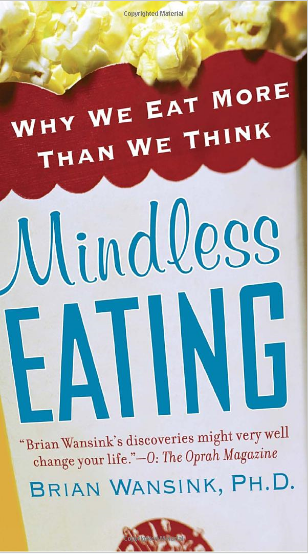 Regular readers may recall that James used Wansink’s work as an example of the universality of behavioural patterns.
Regular readers may recall that James used Wansink’s work as an example of the universality of behavioural patterns.
Exactly the same behavioural errors and mental pitfalls are displayed in the realm of food consumption and the financial markets. For those looking for an entertaining example of the wide spread nature of error prone human decision making this book is excellent.
It also provides yet more evidence of the importance of codifying rules to help overcome our behavioural biases.
The Inefficient Stock Market by Robert Haugen
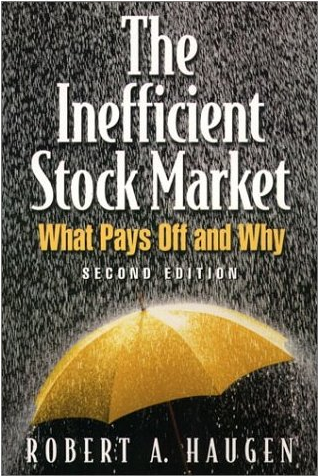 A former academic, Bob Haugen now runs Haugen Custom Financial Systems.
A former academic, Bob Haugen now runs Haugen Custom Financial Systems.
His trilogy of books: The New Finance, The Inefficient Stock Market and the Beast on Wall Street are all excellent. But ‘Inefficient’ is my personal favourite. Haugen explores the failures of classical finance with his tongue firmly in his cheek.
He also extols the virtues of multi-factor quantitative models, and his web site has plenty of data to show that the out of sample performance of such models has been exemplary. This book neatly combines theory and evidence – a top read.
Margin of Safety by Seth Klarman
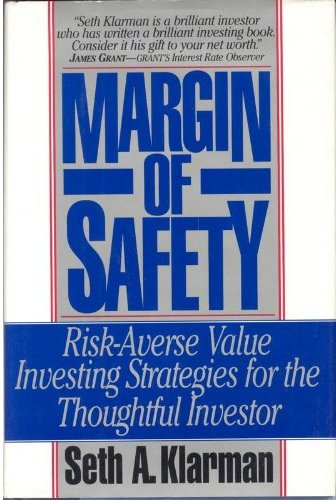 James says this is perhaps the best book on value he has read, although not the best value book I’ve read since copies appear to change hands at around £700-800! James was lucky enough to find someone with a copy of the book who was willing to let me borrow it.
James says this is perhaps the best book on value he has read, although not the best value book I’ve read since copies appear to change hands at around £700-800! James was lucky enough to find someone with a copy of the book who was willing to let me borrow it.
Klarman’s discussions on the nature of value investing are priceless. As Klarman puts it “Value investing…is simply the process of determining the value underlying a security and then buying it at a considerable discount from that value. It is really that simple. The greatest challenge is maintaining the requisite patience and discipline to buy only when prices are attractive and to sell when they are not, avoiding the short-term performance frenzy that engulfs most market participants”.
James said that he displayed strong confirmatory bias when reading Klarman’s work. Klarman argues that value investors should be absolute return focused, and that the margin of safety is all important and central to risk management. He also explores both the behavioural biases and institutional constraints that prevent most investors from following a value orientated strategy.
Your Money and Your Brain by Jason Zweig
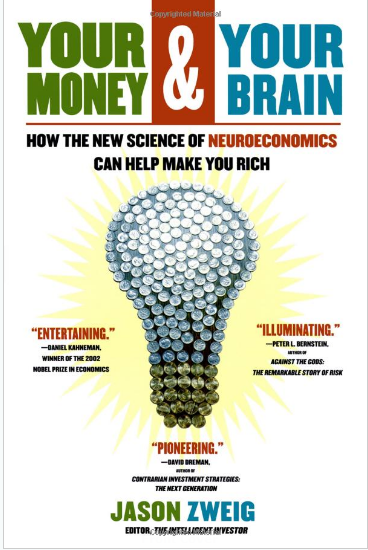 For those of you who don’t know him, Jason is a well respected writer on finance. He edited the latest version of Ben Graham’s Intelligent Investor. Given that James is a huge fan of Graham’s work and rarely think it can be improved. However, Jason managed the near impossible, he added value to Graham’s great text.
For those of you who don’t know him, Jason is a well respected writer on finance. He edited the latest version of Ben Graham’s Intelligent Investor. Given that James is a huge fan of Graham’s work and rarely think it can be improved. However, Jason managed the near impossible, he added value to Graham’s great text.
In this new book, Jason explores neuroeconomics as it applies to investing. The book is a pleasure to read – Jason’s writing style is second to none. For those who are fascinated by the underlying neurological correlates of decision making, this is a must read. It also hints at why we find it quite so difficult to change our behaviour, many of the behavioural biases appear to be a hard wired function of brain architecture.
In a June 2009 article James added a few titles to his reading list.
Even before we know the outcome of the 2008 crisis, there has been an outpouring of books covering what went wrong and why. James chose three books to cover this genre, all by authors who can legitimately claim to have seen the crisis coming.
Greenspan’s Bubbles’ by Bill Fleckenstein
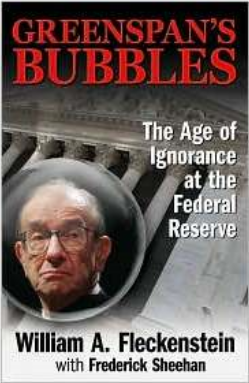 James mentioned that normally he left the Greenspan bashing to Albert (a colleague at Societe Generale), but he loved this short book.
James mentioned that normally he left the Greenspan bashing to Albert (a colleague at Societe Generale), but he loved this short book.
It’s a perfect antidote to the fawning ‘Maestro’ by Bob Woodward and the appalling ‘Age of Turbulence’ by Greenspan himself.
Fleckenstein and his co-author, Frederick Sheehan, go back and expose exactly what Greenspan was saying at the time. They lay bare not only the former Fed chairman’s complicity in the creation of bubbles (as if that wasn’t bad enough), but also his cheerleading activities in bubble promotion.
This is a short book that offers a damning indictment of the incompetence of the oft hallowed Greenspan Fed.
More Mortgage Meltdown by Whitney Tilson and Glenn Tongue
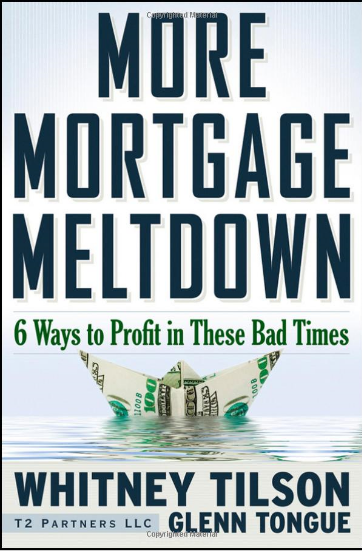 This book splits nicely into two sections. The first provides an in-depth analysis of the problems in the US housing market.
This book splits nicely into two sections. The first provides an in-depth analysis of the problems in the US housing market.
The authors succeed in making the dry technicalities of mortgage malpractices lively and engaging. The crisis has left more than enough blame to go around. Tilson and Tongue do a good job of ensuring that the guilty parties are named and shamed – from the Fed to Wall Street and the ratings agencies, all the way to the government and homeowners themselves.
The second part of the book walks readers through the analysis of six investment opportunities that are created by the crisis.
Whether you agree with the authors’ analysis or not (and generally I do) the real benefit of this section is the way it lays out the investment process that Tilson and Tongue follow, and shows how to follow this process using worked examples.
The book reads easily, as those who know Whitney have come to expect.
This is a great addition to any investor’s library.
Mr. Market Miscalculates by Jim Grant
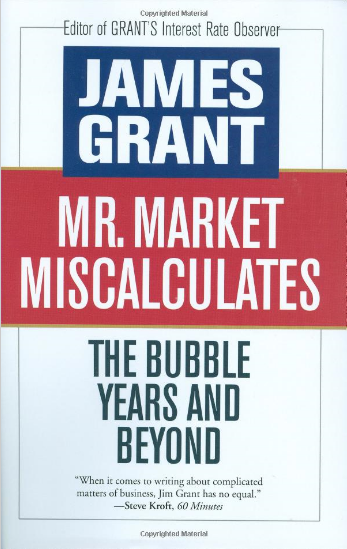 He first recommended this book at the end of last year and it is a great example of a master wordsmith at work. Grant’s writing style is poetic and flows seamlessly as he moves from the insights of Thomson Hankey (sparring partner to Walter Bagehot) to documenting the disasters of the Mortgage Science Project (CDOs).
He first recommended this book at the end of last year and it is a great example of a master wordsmith at work. Grant’s writing style is poetic and flows seamlessly as he moves from the insights of Thomson Hankey (sparring partner to Walter Bagehot) to documenting the disasters of the Mortgage Science Project (CDOs).
His insights lay bare the fallacy of Greenspan’s view that bubbles can’t be analysed ex ante.
Investment
So on to the second topic – investment. These books aren’t related to the current crisis but all provide deep insights into the nature of investing.
Memos to Oaktree Clients by Howard Marks
 Regular readers of James’ notes will have come across references to Howard Marks and his letters before. To James they are in the same class as Seth Klarman’s comments – indispensable reading for those engaged in investing. Indeed Marks wrote one of the introductory essays in the 6th Edition of ‘Security Analysis’ which Klarman edited.
Regular readers of James’ notes will have come across references to Howard Marks and his letters before. To James they are in the same class as Seth Klarman’s comments – indispensable reading for those engaged in investing. Indeed Marks wrote one of the introductory essays in the 6th Edition of ‘Security Analysis’ which Klarman edited.
This book isn’t the easiest to track down (or indeed the cheapest at $200, available from Wave Publishing).
The book collects together some of the best of Marks’ writings from 1990 to 2005. The letters focus on Oaktree’s investment philosophy and its application to the current investment juncture. Given that Oaktree is a fixed income outfit, the letters show how useful a value perspective can be in that market.
The topics covered come close to my own heart such as the folly of forecasting, bubbles, the nature of risk and investment vs speculation. This is a collection that will have you returning on a regular basis to refresh your memory of Marks’ words of wisdom.
Distressed Investing by Marty Whitman and Fernando Diz
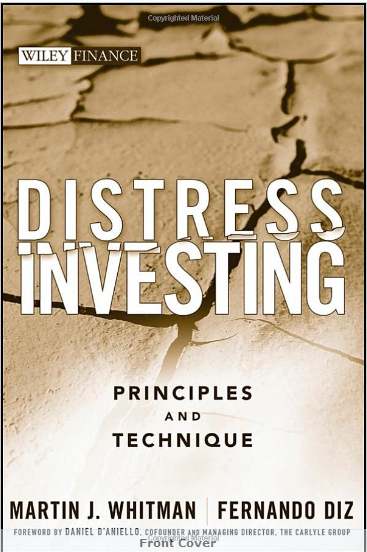 As James have regularly observed in the last six months, generally a backdrop of poor profits and massive leverage is the perfect breeding ground for distressed investing (both equity and debt).
As James have regularly observed in the last six months, generally a backdrop of poor profits and massive leverage is the perfect breeding ground for distressed investing (both equity and debt).
Who better to provide a guide through such a world than Marty Whitman (of Third Avenue fame).
The authors walk the reader through the tricky pathways of reorganisation and bankruptcy. En route they chart the perils and pitfalls that can easily consume the unwary. They also elucidate on the nature of valuation and risk as it applies to distress investing.
The book is written for US investors, so much of the focus is on ‘going concern valuation’ (Chapter 7 style), rather than liquidation. Despite the US focus, I think the book contains enough perspective to be worthy of an international audience.
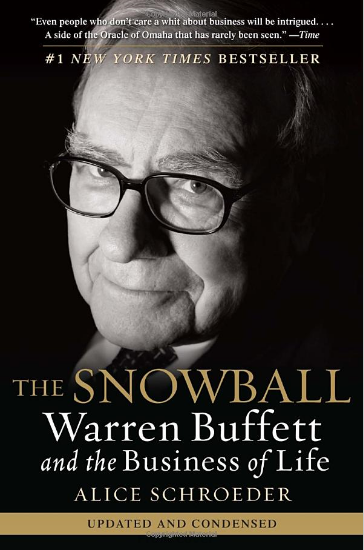 This is without a doubt the longest book on this year’s list, weighing in with an impressive (and slightly daunting) 966 pages!
This is without a doubt the longest book on this year’s list, weighing in with an impressive (and slightly daunting) 966 pages!
Of course, technically Snowball isn’t an investment book. It is a biography of Warren Buffett, but to me the two are intimately linked. Schroeder does an admirable job of portraying Buffett ‘warts and all’. She documents the way in which Buffett built upon Ben Graham’s ideas and extended (often in ways that Graham himself would probably have disapproved).
But she goes further and provides us with a psychological profile which yields intriguing insights. For instance, Schroeder writes “he tended to extrapolate mathematical probabilities over time to the inevitable (and often correct) conclusion that if something can go wrong it eventually will.”
The Myth of the Rational Market by Justin Fox
 It charts the history (or rise and fall) of the efficient markets hypothesis (EMH). His favourite quotation in the book is from Robert Shiller (during his angry young man phase in the early 1980s) when he describes the EMH as “one of the most remarkable errors in the history of economic thought.
It charts the history (or rise and fall) of the efficient markets hypothesis (EMH). His favourite quotation in the book is from Robert Shiller (during his angry young man phase in the early 1980s) when he describes the EMH as “one of the most remarkable errors in the history of economic thought.
It is remarkable in the immediacy of its logical error and in the sweep and implications for its conclusion.” Amen to that!
Psychology
The third category of books concerns James’ own favourite subject area – Psychology.
As Ben Graham long ago opined “The investor’s chief problem and even his worse enemy is likely to be himself.” The books in this section try to bring to life Graham’s observation and in some cases explain how we might try to defend ourselves against ourselves.
Animal Spirits by Robert Shiller and George Akerlof
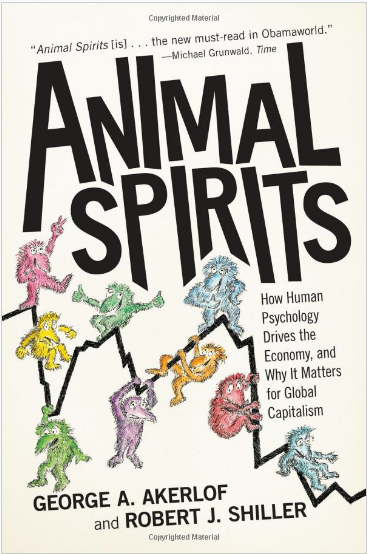 Strangely enough James liked this book (confirmatory bias at work no doubt!). Akerlof and Shiller set out to provide us with some of the psychology that underlies Keynes’ rightly famous notion of animal spirits.
Strangely enough James liked this book (confirmatory bias at work no doubt!). Akerlof and Shiller set out to provide us with some of the psychology that underlies Keynes’ rightly famous notion of animal spirits.
They choose five psychological elements found at the heart of various economic conundrums –confidence, fairness, corruption and bad faith, money illusion and stories. They then go onto to explain how these five factors interact to help us understand some of the mysteries of economics, such as why do economies fall into depression, why does involuntary unemployment exist, and why are financial markets excessively volatile.
In essence this book is a brave attempt to undo the separation of economics and psychology that occurred during the formalisation of the former. Some chapters hold together better than others, but ultimately the book serves as a powerful reminder that “left to their own devices, capitalist economies will pursue excess…There will be manias. The manias will be followed by panics”.
Think Twice by Michael Mauboussin
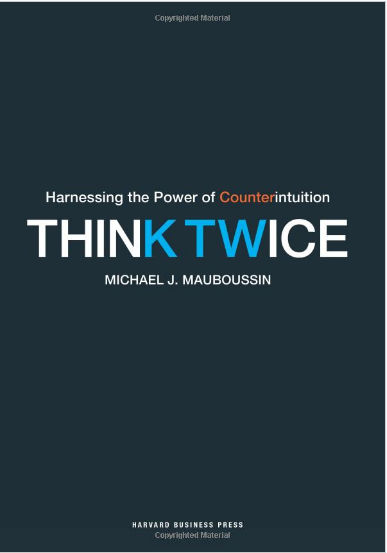 Michael is something of a pioneer in James’ field; it was he who first tried to reach outside the standard approach to finance to gain insights into markets, a furrow that James has since endeavoured to plough.
Michael is something of a pioneer in James’ field; it was he who first tried to reach outside the standard approach to finance to gain insights into markets, a furrow that James has since endeavoured to plough.
In his excellent new book, Michael takes the reader on a tour de force of behavioural decision errors. But he doesn’t stop there. Mauboussin also provides readers with concrete advice on how to avoid stumbling into some of the most common mental pitfalls.
As one would expect from any book written by Michael, it reads exceptionally well, the pages almost turning themselves. As ever, James often measures a book by the number of pages he has marked or turned down. ‘Think Twice’ has more than its fair share.
James mentioned that he I doesn’t agree with everything in the book. Michael places far more importance on the “wisdom of crowds” than James does. But for anyone willing to seek wider insights into the nature of decision-making and how we can avoid stumbling into mental pitfalls, this book is a must read.
Dance with Chance by Spyros Makridakis, Robin Hogarth and Anil Gaba
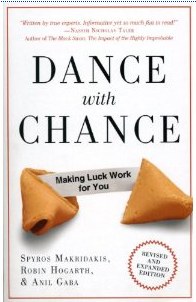 What happens when a statistician, a cognitive psychologist and a decision scientist decide to write a book together?
What happens when a statistician, a cognitive psychologist and a decision scientist decide to write a book together?
The answer is a book all about the ‘illusion of control’, which the authors define as trying to control what cannot be controlled, or to predict what cannot be predicted. In essence this is a book about the folly of forecasting – that’s why James enjoyed it.
The authors highlight the paradox of control. That is by giving up the pursuit of things we cannot control, we actually gain more control.
This is similar to the point I have made before on the need to focus on the process rather than on the outcome. Freeing ourselves from endless worrying about things we can’t control provides us with the ability to focus on the things we can.
However, sometimes the book appears to offer poor advice.
For instance, the authors seem to subscribe to the ‘stocks for the long run’ philosophy (buying stocks and holding them forever, regardless of valuation), which is anathema to James. However, if one can skip over these weaknesses, the book ultimately reminds me of Reinhold Neibuhr’s serenity prayer: “God grant me the serenity to accept the things I cannot change, the courage to change the things I can, and the wisdom to know the difference.”
Hidden gems
The final group of books are what James calls hidden gems. These are books from outside the mainstream (by and large).
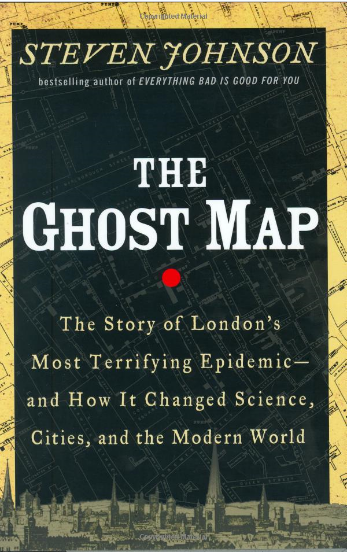 Part medical thriller, part detective story, part history lesson, this book tells the story of the cholera epidemic in C19th London. Not a topic for fun or frivolity for sure. However, this is the tale of Doctor John Snow and how he set out to track down the root causes and transmission mechanism of the terrifying disease.
Part medical thriller, part detective story, part history lesson, this book tells the story of the cholera epidemic in C19th London. Not a topic for fun or frivolity for sure. However, this is the tale of Doctor John Snow and how he set out to track down the root causes and transmission mechanism of the terrifying disease.
The ruling belief in Snow’s time was that cholera was spread by bad air and bad smells. The book recounts the way in which John Snow and Henry Whitehead eventually traced the spread of disease to the water supply.
The tale holds some powerful lessons for the way in which we should approach investment. Snow and Whitehead did their own work, they refused to be swayed by the popular beliefs of their time, and they continued to pursue the facts they uncovered until they reached the logical conclusion. Contrarians rejoice.
The final two choices are more personal to James than any other books on his lists.
In the past James has occasionally referred to Winnie the Pooh as a source of much underestimated investment advice. His Bloomberg header is a quotation from Pooh, “Never underestimate the value of doing nothing.”
James mentions that he is also a fan of eastern philosophy. These may seem like non-sequiturs, but both are brought together in one of this year’s hidden gems
A Gift to My Children by Jim Rogers
 The wisdom packed into this little book’s 85 pages is wonderful. Much of it relates to investing, such as “If anyone laughs at your idea, view it as a sign of potential success” and “people are easily carried away by mob psychology”. Rogers also stresses the importance of history in understanding (both life and markets).
The wisdom packed into this little book’s 85 pages is wonderful. Much of it relates to investing, such as “If anyone laughs at your idea, view it as a sign of potential success” and “people are easily carried away by mob psychology”. Rogers also stresses the importance of history in understanding (both life and markets).
However, his favourite advice is this: “The basic principle to remember is this: They need you more than you need them… Don’t follow a boy to a different school, city, or job. Make the boys follow you”.
The Tao of Pooh and the Te of Piglet by Benjamin Hoff
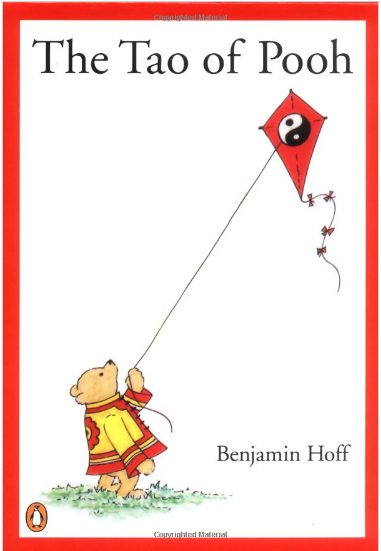 Hoff uses the medium of the much-loved Pooh bear to expound and explain the essence of Taoism.
Hoff uses the medium of the much-loved Pooh bear to expound and explain the essence of Taoism.
I have long felt that investors could learn much from such an approach.


What's been said:
Discussions found on the web: